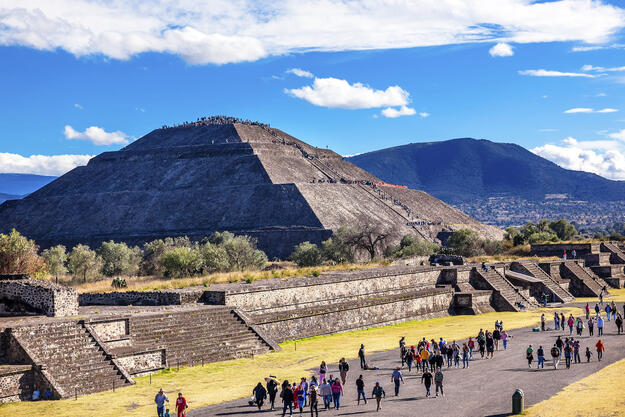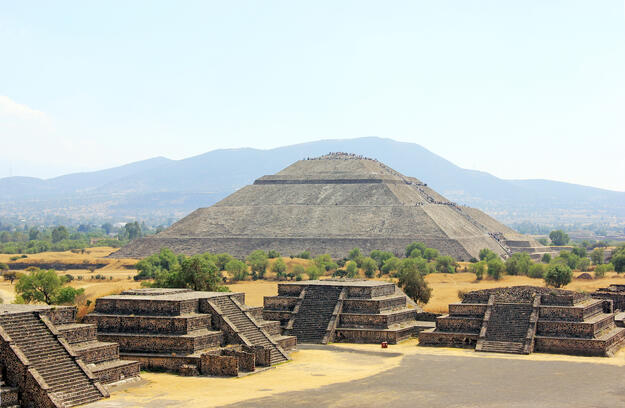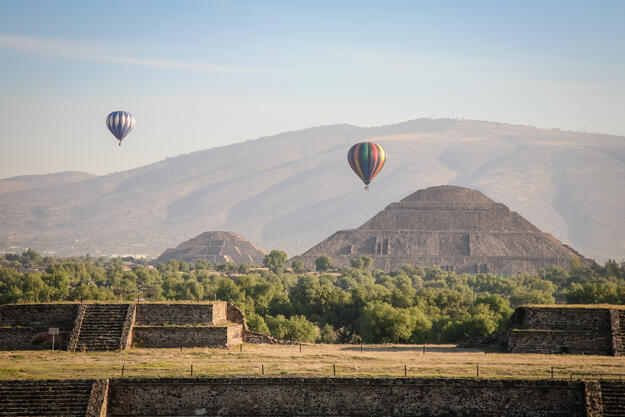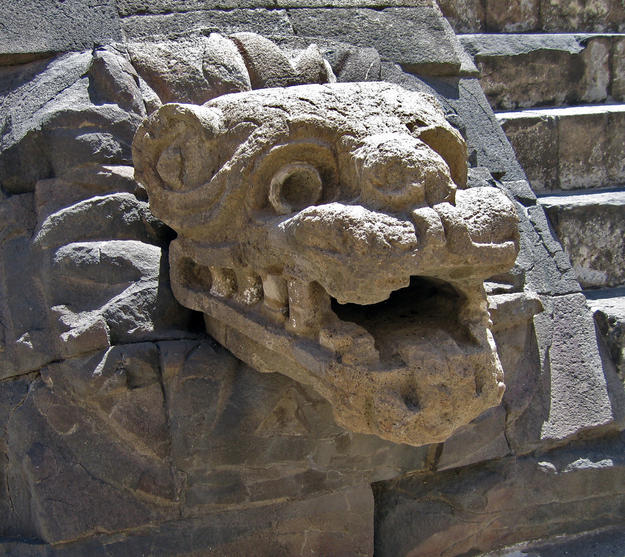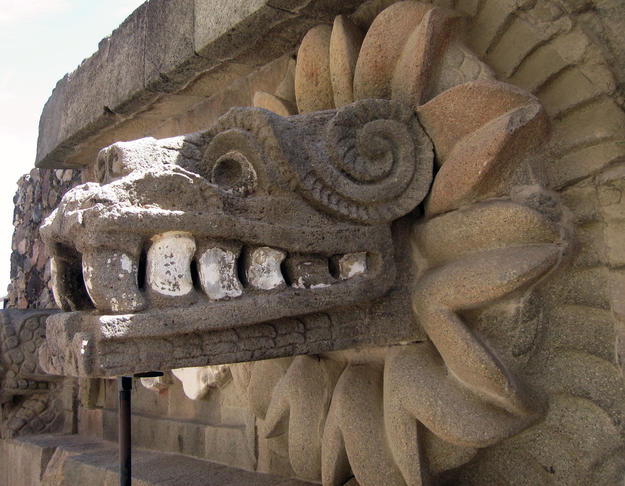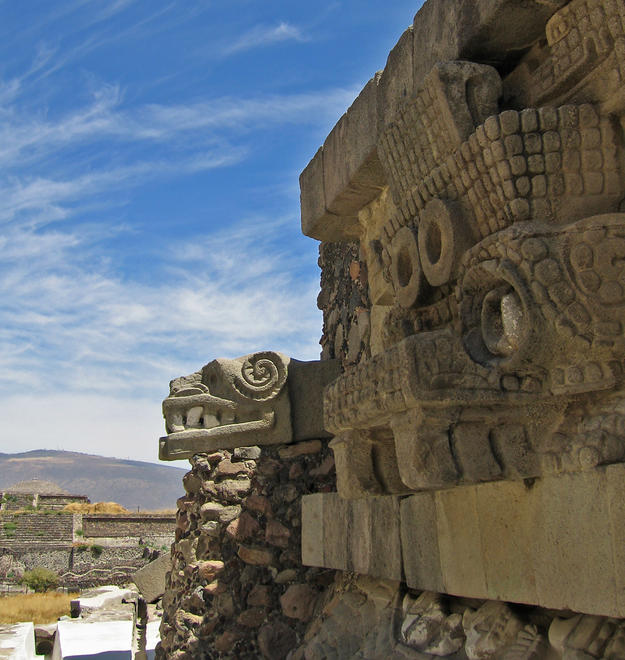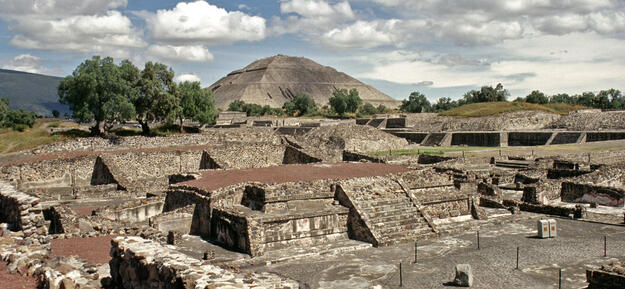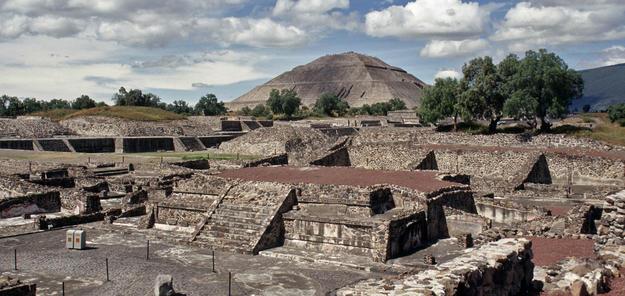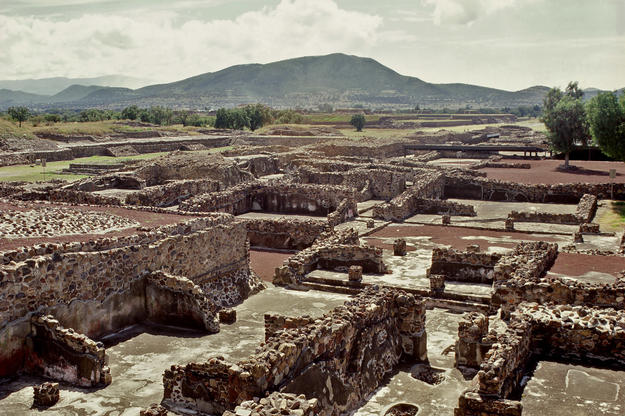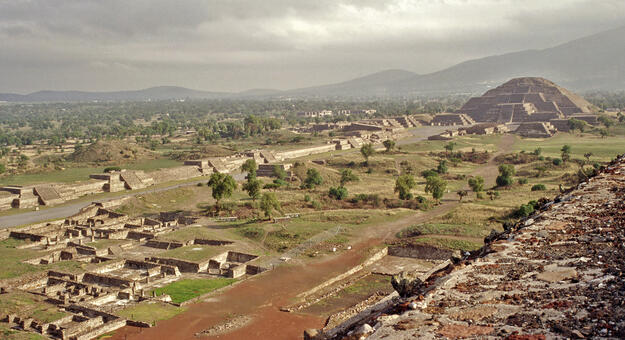Site History and Significance
One of the First Urban Societies in the Americas
Teotihuacan flourished as one of the first urban societies in the Americas for nearly a millennium until its decline in the sixth century. Scholars estimate that close to 200,000 people lived in the city at its peak, and it is now seen as the most influential urban center in Mesoamerica. Its significance was such that five centuries after the city was abandoned, the Mexicas continued to revere the site, even giving it the name Teotihuacan, meaning “the city of the gods.” The site’s primary monuments include the Pyramid of the Sun, the Pyramid of the Moon, and the Temple of Quetzalcóatl, the Feathered Serpent, located to the southeast of the main Avenue of the Dead. Teotihuacan is deeply linked to the identity and pride of Mexico and is the country’s most popular attraction, receiving close to 4.5 million visitors per year.
Excavations in the early twentieth century led to the delimitation of the main archaeological zone of Teotihuacan, which covers 281 hectares (694 acres) of land now administered by Mexico’s National Institute of Anthropology and History (INAH). The pre-Hispanic city extended well beyond the modern-day limit known as Zone A. The archaeological area encompasses two additional protection zones, spanning 3,381 hectares (over 8,350 acres) across two municipalities of the State of Mexico with an expanding population of over 90,000 residents.
Imbalanced Tourism
Beyond the physical fabric of the archaeological site, pressure from tourism and urban expansion has impacted the social dynamics within the surrounding communities. The existing site management plan was approved in 2012 and largely focuses on the internal functioning of the site, with little discussion of the needs of the eight communities that surround Teotihuacan. As a result, while many residents rely on the site for a subsistence-level income, they also view it as an obstacle to their own development as they demand more public services that impact the site. Many local residents feel unable to access the economic opportunity that tourism presents and are driven to offer tourism services in the unregulated informal economy. The interruption of tourism at the onset of the COVID-19 pandemic accelerated the rate of encroachment into unprotected areas outside the principal site that likely contains valuable archaeological remains. Close to 40 percent of the ground area in this zone is already occupied by informal construction. Construction of a new international airport just 15 km away will likely bring more tourism and development pressure to the area.
Our Involvement
Four Watch Designations Since 1998
Teotihuacan’s structures have long faced deterioration brought on by exposure to the elements, crystallization of soluble salts, erosion, and biological growth. For this reason, Teotihuacan was included on the World Monuments Watch in 1998 and 2000. With funding from American Express, World Monuments Fund (WMF) supported conservation of the iconic mural paintings at Tepantitla with the participation of students from the School of Conservation and Restoration of Guadalajara (ECRO).
The Temple of Quetzalcoatl was included again on the 2004 Watch because it was in a state of extreme deterioration. With funding from the Selz Foundation matched by INAH, WMF led a multi-year conservation project that included emergency interventions, cleaning, archaeological research, and maintenance. Of particular concern was the temple’s western facade, which had suffered the most rapid deterioration. Local conservators were employed and trained to maintain the structures after project completion.
2022 World Monuments Watch
Inclusion of Teotihuacan on the 2022 World Monuments Watch urgently calls attention to the challenge and opportunity to set forth model tourism management practices with the potential of generating social benefits. Providing a platform for greater local participation, WMF is facilitating local community involvement in tourism planning across the region to ensure a variety of stakeholders benefit from visitation.
![]()
Learn More
Through the World Monuments Watch, WMF collaborates with local partners to design and implement targeted conservation programs—including advocacy, planning, education, and physical interventions in the historic built environment—to improve human well-being through cultural heritage preservation.
Sign up for our newsletter to receive regular updates on our projects, stories from the field, upcoming events, and more!
![]()
This work is supported by American Express.

